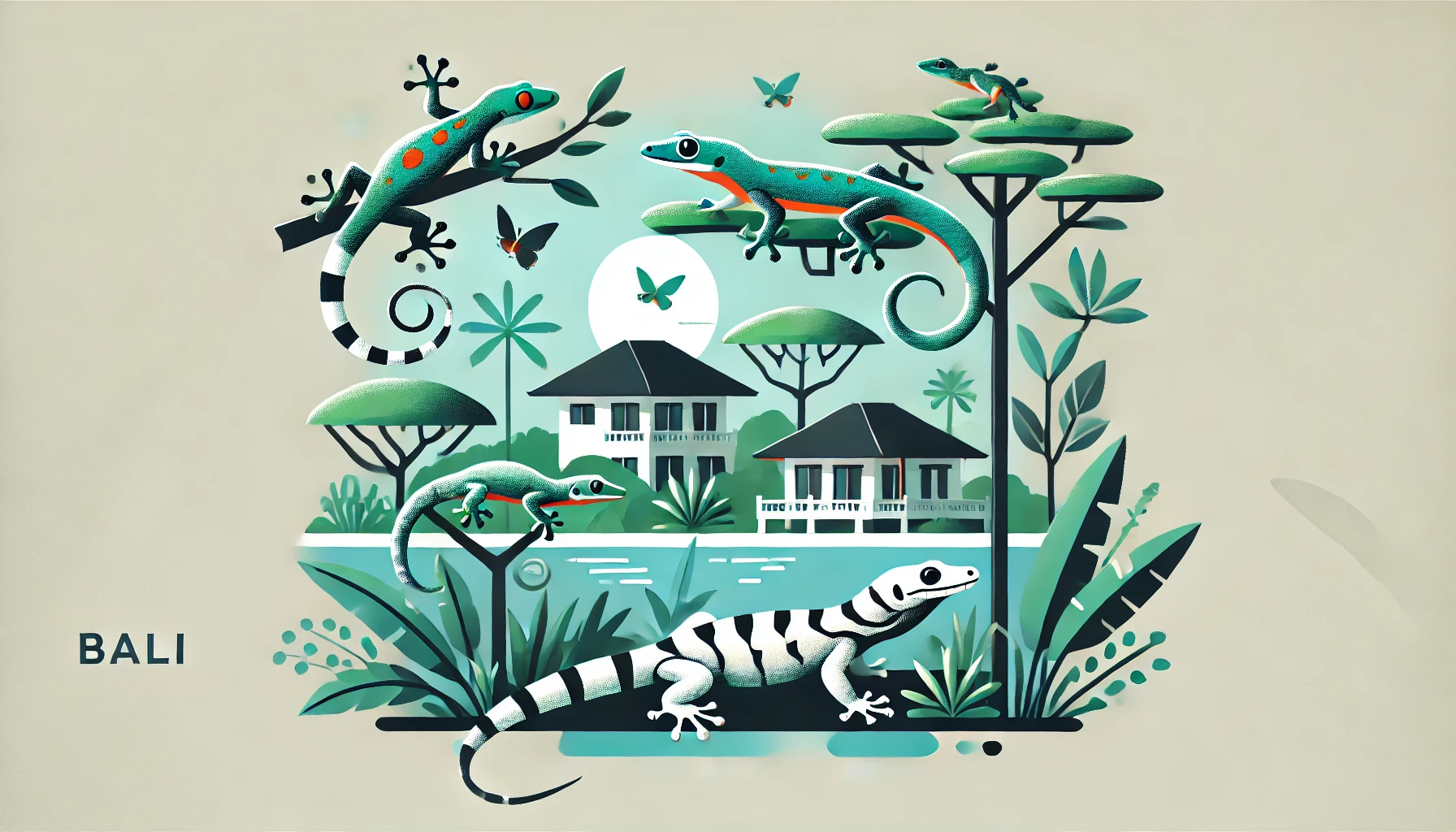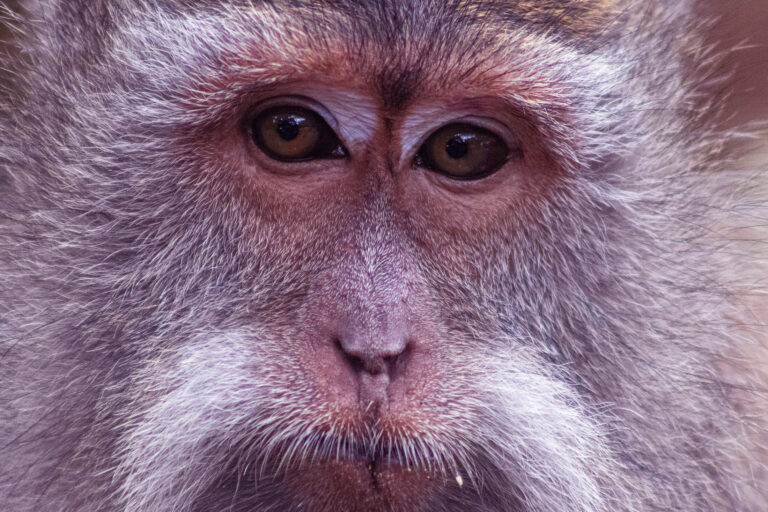Lizards, Geckos, Tokay Geckos, and Skinks in Bali
Bali’s tropical climate is home to a fascinating array of lizards, geckos, and skinks. These creatures are commonly found in homes, gardens, and wild areas, playing an important role in pest control and maintaining the balance of Bali’s ecosystem. In this guide, we’ll explore some of the most common species you’ll encounter on the island.
Common Lizards in Bali
1. Common House Gecko (Hemidactylus frenatus)
The Common House Gecko is one of the most frequently spotted reptiles in Bali, often seen on walls, ceilings, or windows at night. These small, agile lizards are usually around 8-10 cm long, with a pale, translucent appearance. They are harmless and helpful in reducing insect populations, including mosquitoes, moths, and flies. House geckos communicate with a series of soft clicks and chirps, which are often heard at night as they hunt for prey.
- Habitat: Homes, gardens, and urban areas
- Diet: Insects such as moths, mosquitoes, and small flies
2. Tokay Gecko (Gekko gecko)
The Tokay Gecko is much larger and more colorful than the common house gecko, with its distinct gray-blue body covered in orange or red spots. It can grow up to 30-40 cm in length and has a reputation for its loud “tokay” call, which gives it its name. While these geckos are non-venomous, they can deliver a painful bite if threatened. Despite their intimidating appearance, Tokay Geckos are incredibly beneficial, as they keep the insect and rodent population in check.
- Habitat: Forests, rural areas, homes, and gardens
- Diet: Insects, small mammals, and sometimes birds
- Interesting Fact: Tokay Geckos are considered a sign of good luck in some cultures, but they can be territorial and aggressive when provoked.
Skinks and Other Interesting Species
3. Common Sun Skink (Eutropis multifasciata)
The Common Sun Skink is a medium-sized lizard with smooth, shiny scales that can range from brown to bronze in color. Skinks are often seen basking in the sun during the day, particularly in gardens or open areas near human settlements. They are fast-moving and can be challenging to catch sight of once disturbed. Skinks are important for controlling the insect population and are harmless to humans.
- Habitat: Gardens, open sunny areas, and forest edges
- Diet: Insects, spiders, and other small invertebrates
- Interesting Fact: Skinks have the ability to detach their tails when threatened, which continues to wriggle and distract predators.
4. Flying Lizard (Draco volans)
The Flying Lizard, or Draco, is a unique species that can glide between trees using wing-like membranes that extend from its ribs. These fascinating lizards are found in forested areas of Bali and are particularly adapted to life in the treetops. While they don’t “fly” in the conventional sense, they can glide distances of up to 10 meters to escape predators or move between trees.
- Habitat: Forested areas
- Diet: Ants, termites, and small insects
- Interesting Fact: Draco lizards can camouflage with the bark of trees, making them hard to spot unless they’re gliding.
Monitor Lizards in Bali
5. Water Monitor Lizard (Varanus salvator)
The Water Monitor Lizard is one of the largest and most impressive reptiles in Bali, growing up to 2.5 meters in length. These semi-aquatic lizards are commonly found near rivers, lakes, and wetlands, but they have also been spotted in urban areas. Water monitors are excellent swimmers and climbers, making them formidable predators. Although they can look intimidating, they are generally shy and will avoid humans if given the chance.
- Habitat: Wetlands, rivers, rice paddies, and occasionally urban areas
- Diet: Fish, birds, small mammals, and carrion
- Interesting Fact: Water monitors can hold their breath underwater for extended periods, making them skilled hunters in both aquatic and terrestrial environments.
What to Do if You Encounter a Lizard, Gecko, or Skink in Your Villa
Lizards, geckos, and skinks are commonly found in Balinese homes, particularly geckos, which are drawn to the abundance of insects. Here’s what to do if you find one in your villa:
1. Leave Them Be
Most lizards and geckos are harmless and beneficial, as they help control insect populations. They are unlikely to pose any danger to you, so it’s best to leave them alone.
2. Relocating Larger Species
For larger species like Tokay Geckos or Water Monitors, which may be more intimidating, you can contact local wildlife experts for safe relocation.
Conclusion
Bali is home to a diverse range of lizards, geckos, and skinks, each playing a vital role in the ecosystem. From the friendly house geckos chirping in your villa to the impressive water monitors found near rivers, these reptiles are an essential part of Bali’s natural environment. Whether you encounter a small skink basking in the sun or hear the call of a Tokay Gecko at night, remember that these creatures are largely harmless and beneficial in controlling pests. Embrace them as a natural part of Bali’s rich wildlife!







